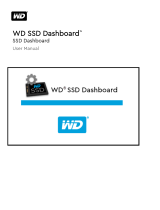
8.2.2 Locating Physical Disks in an Array or Logical Drive......................................................................69
8.3 Working with Failed or Failing Disk Drives..................................................................................................70
8.3.1 Replacing Disk Drives in a Logical Drive........................................................................................70
8.3.2 Setting a Disk Drive to ‘Failed’......................................................................................................70
8.4 Erasing a Disk Drive ....................................................................................................................................71
8.5 Uninitializing Disk Drives.............................................................................................................................72
8.5.1 Uninitializing a Disk Drive.............................................................................................................72
8.5.2 Uninitializing all Drives on a Controller ........................................................................................72
8.6 Conguring the Global Physical Drive Write Cache Policy..........................................................................73
8.7 Working with Controllers............................................................................................................................74
8.7.1 Rescanning a Controller................................................................................................................74
8.7.2 Optimizing Controller Performance..............................................................................................74
8.7.3 Changing the Connector Operating Mode....................................................................................75
8.8 Working with System Alarms......................................................................................................................76
8.9 Updating Controller, Enclosure, and Disk Drive Firmware..........................................................................77
8.9.1 Before You Begin...........................................................................................................................77
8.9.2 Updating the Controller Firmware ...............................................................................................77
8.9.3 Updating the Disk Drive Firmware ...............................................................................................80
8.9.4 Updating the Enclosure Firmware ...............................................................................................81
9 Monitoring Status and Activity..................................................................................................83
9.1 Monitoring Options....................................................................................................................................83
9.2 Checking Status from the Main Window ...................................................................................................83
9.2.1 Viewing Activity Status in the Event Log.......................................................................................83
9.2.1.1 What Do the Event Status Icons Mean?.........................................................................84
9.2.2 Viewing Task Status in the Task Log..............................................................................................85
9.2.3 Viewing Component Status in the Storage Dashboard.................................................................85
9.2.3.1 Monitoring Enclosure Status..........................................................................................87
9.2.3.2 Viewing SMART Statistics...............................................................................................87
9.2.4 Viewing Storage Space Usage in Chart View................................................................................88
9.3 Notifying Users by Email About Status and Activity ...................................................................................88
9.3.1 Setting Up Email Notications......................................................................................................89
9.3.2 Sending a Test Message................................................................................................................91
9.3.3 Modifying or Removing an Email Recipient .................................................................................92
9.3.4 Modifying Email Server Settings...................................................................................................93
9.3.5 Disabling Email Notications........................................................................................................93
9.4 Changing an Operating System's Event Log Setting....................................................................................93
10 Managing Your Storage Space..................................................................................................95
10.1 Deploying Servers ....................................................................................................................................95
10.1.1 Creating a Server Template File..................................................................................................95
10.1.2 Duplicating the Server Template................................................................................................96
10.2 Managing Remote Systems.......................................................................................................................98
10.2.1 Adding Remote Systems with the Wizard...................................................................................99
10.2.2 Manually Adding a Remote System............................................................................................99
10.2.3 Removing a Remote System.......................................................................................................99
10.2.4 Changing the Auto-Discovery Settings......................................................................................100
10.3 Clearing the Controller Conguration.....................................................................................................101
10.4 Changing the Agent Base Port Setting....................................................................................................102
10.5 Changing the Web Server Port................................................................................................................103
10.6 Granting Standard Users Admin Privilege ..............................................................................................104
11 Solving Problems....................................................................................................................105
11.1 General Troubleshooting Tips.................................................................................................................105
6CONFIDENTIAL Document Number: PMC-2153109, Issue 3





















